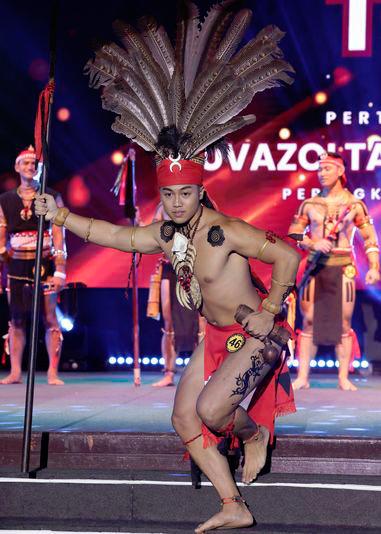PENAMPANG: The Kaamatan Festival celebration at the Hongkod Koisaan Cultural Centre has become a platform for young people from the Bisaya ethnic group to showcase their talent in playing traditional musical instruments, particularly the kulintangan.
Siti Norasnitah Jiknih, 18, from the Puteri Kulintangan Suasa group in Beaufort, feels very fortunate to have the opportunity to play this traditional musical instrument for the second time during the Kaamatan Festival, which is celebrated together by the people of Sabah and the whole country every May.
The third of four siblings said she and her five group members, aged between 17 and 18, usually held practice sessions for two to three hours daily in preparation for every event they participated in.
“Usually, we perform the most popular traditional Bisaya song, ‘nakuro ko kidum-kidum’, which means ‘why are you smiling’,“ she said when met by Bernama at the Bisaya House of the Hongkod Koisaan Cultural Centre, Kadazandusun Cultural Association (KDCA).
Aspiring to become an educator, Norasnitah said she has been learning the kulintangan since she was nine years old.
Sabah is home to a total of 35 ethnic groups and 217 sub-ethnic groups, all of whom have lived harmoniously together for a long time.
Norasnitah said that although she initially found it difficult to practise, with encouragement from her parents and friends, she can now play the kulintangan well without an instructor.
“We practise twice a week, and remembering the notes for the songs is similar to playing the piano,“ she said, adding that she aspires to become a successful female kulintangan player.
Mohd Zahiruddin Gismi@Jismi, 23, who also plays the kulintangan, said he started playing the traditional instrument at the age of 14 to fill his free time outside of school hours.
Along with five of his friends, Mohd Zahiruddin from the cultural artist group of the Cultural and Arts Bureau of the United Sabah Bisaya Association (PBBS), also expressed pride in showcasing his talent to visitors at the Bisaya House.
In addition to the kulintangan, Mohd Zahiruddin explained that his group uses other instruments to produce Bisaya melodies, including canang satu and dua, manginsaruk, mananggungu, and tatawak or gong.
Originally from Kampung Batandok, Mohd Zahiruddin mentioned that among the songs they frequently performed are ‘raranyut’ and ‘nainanang’, which tell stories about the lives of the Bisaya community in the Beaufort district.
Keen to keep this traditional music alive for future generations, his group won first place in the bergandang competition for the Labuan zone last December.
“Usually, we practise every day at my grandmother’s house. I have a deep interest in playing the kulintangan and we also rehearse for wedding celebrations,“ said the third of four siblings.









